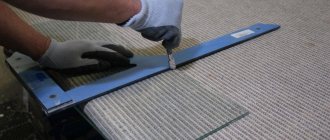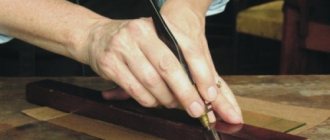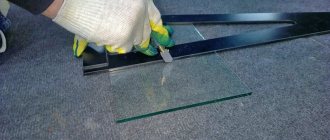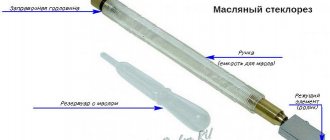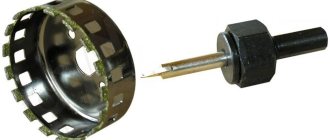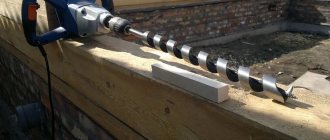You can try to do this chemically rather than mechanically.
The problem with tempered glass is high stress in the surface layer of the glass. As soon as during the drilling process the stresses, mechanical stresses, in this layer exceed the threshold, the entire sheet immediately crumbles into small pieces. But glass can be dissolved in hydrofluoric acid - such removal of material does not cause additional mechanical stress, although the shape and size of the hole can no longer be guaranteed with the same accuracy as with mechanical drilling.
Of course, it is not a fact that this method will work. After all, it may well turn out that this surface layer absolutely does not care how its integrity is violated - with a drill or hydrofluoric acid. But it's interesting to try.
When the need arises to drill glass, most will most likely turn to specialists who will do this work for you, but not for free. In fact, the whole process of drilling at home is not as complicated as it might seem. In this article we will understand how to drill glass, as well as how and with what it can be done.
Preparing for work
- Before you drill glass at home, you need to prepare it for work: use turpentine or alcohol to degrease the entire surface, and then wipe it with a dry soft cloth;
- Do not allow the glass sheet to slide during operation.
- The sheet must be completely positioned on the base.
- The place where you decide to drill a hole should be marked with a marker or construction tape.
- If you do not have the skills to drill holes, we advise you to practice on small pieces so as not to spoil the main sheet.
- Drilling glass at home is not fast. The process will take quite a long time. While working, do not press too hard to speed up the work.
- The drill should be positioned at right angles to the plane. One hole should not be made at a time. From time to time you need to stop and let it cool a little.
- When you are in the final stage, i.e. When the hole is almost ready, you need to turn the glass sheet over and drill a hole on the other side. This operation allows you to avoid cracks or chips, and you will also get a hole of the correct shape.
- In order to get rid of small irregularities or roughness on the glass surface, take fine sandpaper and sand the sheet.
We understand the features of the material
Before asking yourself the question of how to drill glass at home, you should at least get acquainted in general terms with the characteristics and features of this material.
The glass production process is quite complex. It is performed at industrial enterprises equipped with special equipment. The main stage of this process is the preparation of a melt, which includes several components. Such a melt for glass is subjected to sudden supercooling, and the crystallization process is not completely completed.
To prepare the melt, the mixture of components that make up the future glass is subjected to significant heating - up to 2500°. Depending on the chemical basis of the melt, glasses are distinguished:
- oxide category;
- sulfide;
- fluoride type.
Oxide glass (aka silicate) is used to make bottles.
Glass, which can also be opaque, is divided into various types depending on the main characteristics of the material. So, glass is distinguished:
- quartz, which is obtained by melting quartzite, also known as “rock crystal” (this material can be of natural origin and is found mainly in places where quartz deposits have been exposed to lightning);
- optical type, used for the manufacture of basic elements of optical instruments (lenses, prisms, etc.);
- highly resistant to aggressive chemicals and elevated temperatures;
- industrial use (the most extensive category of glass, also used in everyday life).
The question of how to drill a hole in glass most often arises when using the latter type of product. Industrial products, in turn, are also divided into several categories:
- potassium-sodium type (such glasses, characterized by a clean and light internal structure, have a relatively low melting point, so they are often used for the manufacture of glass products of complex shapes);
- potassium-calcium type (glass of this type has a surface without a pronounced shine, is highly hard and difficult to melt);
- lead type (such glasses have a pronounced shine, which makes them very similar to crystal, high fragility with a fairly high plasticity of the internal structure, significant specific gravity and a higher price when compared with the cost of products of other types);
- borosilicate (they are highly resistant to temperature changes and mechanical stress and are quite expensive).
In most cases, drilling of window or display glass is required
There is also a classification of glass according to purpose. Thus, various types of glass are used for:
- glazing of windows and other translucent structures;
- manufacturing of containers;
- reducing radiation levels;
- fiberglass production;
- protecting smartphone screens;
- making dishes;
- production of thermometers capable of measuring temperature in the range from –200° to +650°;
- manufacturing laboratory glassware (such glasses are characterized by high thermal stability);
- production of medical products (ampoules, tubes, containers for medicines);
- fireplace screens and ovens (in such cases, heat-resistant glass is used);
- manufacturing of electric lamps (in this case, so-called electric bulb glasses are used);
- production of incandescent lamps, X-ray tubes, ignitrons (this requires vacuum glass);
- creation of elements of optical instruments - cameras, microscopes, telescopes, etc.;
- manufacturing thin-walled chemical containers and other products that require high resistance to chemical and thermal effects (for this, quartzoid glasses, also known as Vicor, are used).
Drilling thick glass is best done on a machine
Drill glass with a regular drill
To drill holes in glass you will need the following:
- Drills designed for drilling ceramic or metal materials;
- Low-speed drill or screwdriver;
- Turpentine;
- Plasticine;
- Alcohol.
The sheet must be placed on a completely flat surface. There are some nuances here: the edges should not hang down, and it should not wobble.
The drill or screwdriver must be set to the lowest rotation speed. Clamp the required drill bit into the chuck. After this you need to check the drilling. If there is increased runout, then it is advisable to change it. The lowest speed for drilling is 250 rpm, and the highest is 1000 rpm.
How to drill glass using sand
At a time when there were no drills and screwdrivers, glass drilling was done using this method. In order to make a hole using sand you will need the following things:
- Naturally sand.
- Petrol.
- Lead or tin.
- Gas-burner.
- A metal mug or other similar vessel.
The surface must be degreased with gasoline , and after that a pile of wet sand must be poured onto the future drilling site. Then, using some sharp object, you need to make a funnel of exactly the same diameter as the future hole should be.
A pre-molten mixture of lead or tin must be poured into this resulting form. After a few minutes, you need to remove the sand and remove the frozen part of the glass. It should come off the surface easily. The resulting hole will be perfectly smooth and will not require any additional processing.
To heat tin or lead, use a metal mug or other container and a gas burner. If you don’t have a burner, then a regular household gas stove will do.
Benefits of using sand
When using a cutting tool, there is a high probability of surface damage. Using sand will help avoid this. You will need:
- Fine sand.
- Petrol.
- Gas-burner.
- A small amount of tin.
- A vessel made of metal.
Work order:
- The surface is degreased. To do this, you can use an alcohol solution.
- In the area where you need to get the required hole, a pile of sand is poured. It is slightly moistened.
- Using a sharp object, a small depression is created.
- Molten tin is poured into the created recess, after which you need to wait a little.
- A pile of sand is removed from the surface. After this, the tin is melted with a gas burner.
It is worth considering that it is quite difficult to obtain a high-quality hole in this way, so mechanical processing of the hole with a drill is additionally necessary.
How to drill with a homemade drill
Drilling glass at home will require preparing a special drill, which consists of a diamond roller located in a regular glass cutter and a metal rod. It is necessary to make a cut in this rod into which this diamond roller will be placed so that it is stationary in relation to the rod.
Having prepared such a drill, fix it in a screwdriver or drill and start drilling a hole. It can be called a modification of conventional diamond-coated drills. Therefore, if you do not have the opportunity to purchase such a factory drill, then you can easily make it yourself.
There is another way to prepare a homemade drill. You need to take any ordinary drill, clamp it in pliers and hold it in the flame of a gas burner for several minutes. After the end of the drill turns white, you need to quickly cool it by dipping it into sealing wax. Once it has cooled, remove any remaining sealing wax if present. Through this simple operation you get a hardened tool that can be used to drill through hardened material.
Tools
0 votes
+
Vote for!
—
Vote against!
If it is necessary to drill glass surfaces, many prefer to entrust this task to professionals, turn to special services, spend money, and most importantly, time. We’ll find out how to drill glass at home and what you can use to drill glass.
Table of contents:
- Types and features of glass
- Types of drill bits for drilling glass
- Preparing glass for the drilling process
- How to drill glass with a regular drill
- How to drill glass at home using sand
- How to drill glass with your own hands using a homemade drill
- Tips for drilling glass at home
- Working with glass using a glass cutter
- Unconventional methods of drilling glass
Types and features of glass
The formation of glass occurs during supercooling of a melt from several components, while the speed of this process is quite high and the crystallization process does not have time to complete.
Glass is a fragile material that is often used for human needs. Glass is formed at a fairly high temperature from 200 to 2500 degrees. Not all glasses are transparent; this property is not a general characteristic of this material.
In relation to the main material used during glass production, glasses are distinguished:
- oxide,
- sulfide,
- fluoride
Depending on the type of application, there are:
- quartz type glass - made by melting quartzite or rock crystal, this material can be natural, it is formed when lightning strikes the location of quartz deposits;
- optical glass is used to make lenses or prisms;
- Chemical type glass is characterized by high resistance to chemicals and temperature changes;
- Industrial glass is widely used in the manufacture of various things that people use.
Industrial glass is:
- potassium-sodium type - characterized by a low melting point, different shapes can be easily obtained from it, has a clean and light structure;
- potassium-calcium type - has high hardness and is difficult to melt, does not have a pronounced shine;
- lead type - similar to crystal, very fragile and shiny, more expensive, heavy, but at the same time quite soft;
- borosilicate type - resistant to temperature changes, exposure to foreign substances, quite expensive.
In relation to the area of use, glass is distinguished:
- window,
- containers,
- radiation resistant
- fiberglass,
- protective,
- dishes,
- crystal,
- thermometric,
- heat resistant,
- medical,
- heat resistant,
- electric bulbs,
- electrovacuum,
- optical,
- chemical,
- quartzoid.
Types of drill bits for drilling glass
The process of drilling glass requires a good, and, most importantly, suitable drill and material that will instantly cool the glass during the drilling process. Let's look at the main types of drills that are suitable for glass:
- drill in the form of a spear or feather - made of hard alloys, the diameter of such devices ranges from 3 to 12 mm, if you have the skills, drilling glass with such a drill is quite possible, but you cannot do without the formation of small chips;
- spear-shaped drills with diamond coating - characterized by softer drilling, no chips;
- tubular or round drills are used to cut circles or rings on glass surfaces; this process is most conveniently carried out using a drilling machine;
- brass type glass with diamond coating requires mandatory cooling through the supply of water or turpentine;
- A tubular diamond type drill is used to drill a hole in glass, it has the form of a crown with a shank, the end of the crown is diamond coated, and requires cooling.
Preparing glass for the drilling process
1. Before you start drilling glass, you should prepare the surface for this process.
2. Using alcohol or turpentine, be sure to degrease the surface and then wipe with a dry cloth.
3. The glass sheet is not allowed to slip or shrink on the surface.
4. The glass sheet must be placed on the base.
5. It is better to mark the drilling point using construction tape or a marker.
6. If you do not have the skills to work with glass drilling, it is better to practice on small fragments so as not to ultimately spoil the material.
7. Drilling glass takes a long time; do not press hard on it to speed up the procedure.
8. Hold the drill bit at a right angle to the glass surface. Do not drill one hole at a time; stop periodically to allow the glass to cool.
9. When drilling is completed, when the hole is almost ready, you should turn the glass over and drill a hole from the back side. This procedure will help avoid chips or cracks and make the hole the desired shape.
10. To remove small roughness or unevenness on the glass surface, use fine sandpaper.
How to drill glass with a regular drill
To complete this process, you must have:
- drill, which is used for drilling metal or ceramic surfaces;
- screwdriver or low-speed drill;
- plasticine,
- turpentine,
- alcohol solution.
The glass must lie on a completely flat surface. Pay attention to the placement of the glass; the edges should not hang over and the glass should not wobble.
Set the screwdriver or drill to the minimum rotation speed. Insert the glass and check whether the device breaks the glass; if there is significant runout, it is recommended to replace the drill.
Using cotton wool and alcohol, degrease the glass and make a recess out of plasticine in the place of the future hole. Pour turpentine into it and begin the drilling process. To avoid the appearance of cracks, you should not exert much force during this process. Hold the device lightly and without pressing over the glass.
The minimum rotation speed for drilling per minute is 250, and the maximum is 1000 cycles.
How to drill glass at home using sand
At a time when there were no screwdrivers and drills, this method of drilling glass was used. To drill glass using sand you will need:
- sand,
- gasoline,
- tin or lead,
- gas burner,
- metal vessel, preferably a mug.
Be sure to degrease the surface with gasoline, and pour a mound of wet sand onto the site where you intend to drill. Next, using a sharp object, you should make a funnel the size of the hole.
Pour a pre-prepared mixture of tin or lead into this form, after a few minutes, remove the sand and remove the frozen part of the glass, which should easily come off the surface.
To heat lead or tin, use a metal vessel and a gas burner. If there is no gas burner, replace it with an ordinary stove.
Such a hole is perfectly smooth and does not require additional processing effort.
How to drill glass with your own hands using a homemade drill
The drill used in the work process consists of a diamond roller, which is placed in the simplest glass cutter, and a metal rod.
You need to cut a special hole in the rod into which the diamond roller is placed. The roller is installed in such a way that it is stationary.
Attach the drill bit to a drill or screwdriver and start drilling.
This drill is a modification of conventional diamond-coated drills, so if you cannot buy such a drill, make it yourself.
Another option for making a drill involves drilling glass with a small hole diameter of up to 50 mm. Take any ordinary drill. Turn on the gas burner, clamp the drill with pliers and hold it over the flame for several minutes. When the tip of the drill turns white, cool it quickly by dipping it in sealing wax. After it has cooled, remove the drill and remove drops of sealing wax from the surface, if any. This glass has become tempered and is excellent for drilling glass.
Tips for drilling glass at home
1. A little honey or turpentine should be applied to the place where the hole will be drilled in order to prevent the appearance of cracks and splits.
2. Do not press the drill from above.
3. The interval between drilling is 5-10 seconds. It is advisable to dip the drill in a vessel with water during breaks to prevent the glass from melting.
4. You cannot rock the drill from one side to the other.
5. If possible, it is better to use a screwdriver; this item is more gentle, as it has low speed.
6. The cost of drilling glass in a professional setting starts from $10, so by using these tips you can save a lot of money.
7. Not only alcohol, but also acetone is perfect for degreasing the surface.
8. When working with a drill, do not forget to follow safety precautions, wear goggles and gloves
9. The distance between the edges of fragile glass should be at least 1.5 cm, for ordinary glass 2.5 cm.
10. The best surface for working with glass is wood.
Working with glass using a glass cutter
1. In order to make a hole in glass of large sizes or unusual shapes, a glass cutter is suitable.
2. Using a felt-tip pen or marker, make a marking along which the drilling will be carried out.
3. When working with a glass cutter, you should not make sudden movements; pressure should be smooth and have the same force.
4. Using the handle of a glass cutter, tap the glass so that the cut part falls out.
5. To remove excess glass, use special tongs.
6. Pay attention to the condition of the tool before starting work. The location of the roller should be central, it should rotate smoothly and evenly.
Unconventional methods of drilling glass
1. To drill through carbide type glass, you should prepare a cooling liquid. To do this, take acetic acid and dissolve aluminum alum in it. If they are not available, mix turpentine with camphor in a one to one ratio. Treat the glass with one of the solutions, and only then start drilling.
2. If there is no drill, use copper wire, which must be inserted into the drill. In this case, drilling occurs using a specially prepared solution. One part camphor and two parts turpentine, add coarse sandpaper type powder to this mixture. Place the mixture in the place where you want to drill a hole and start working.
3. There is another method using this solution. Use a piece of metal tubing that is inserted into the drill. Make a plasticine ring and attach it to the surface of the glass. The height of the ring is 10 mm, and the diameter is 50 mm. Apply a solution of turpentine, camphor and emery powder into the recess.
4. Take a tube made of aluminum, copper or duralumin, the length of which is about 5 cm. Drive a wooden plug into one end, and cut out the teeth with a hex file at the other end. Screw the self-tapping screw into the end on which the wooden plug is located, and saw off its head. Attach two circles pre-cut from cardboard, the diameter of which is the same as the diameter of the future hole, to the inner and outer parts of the glass. Place the glass on a rubber surface and sprinkle abrasive powder on it. Place the place where the self-tapping screw is attached, with the cut off head, in a drill or screwdriver; treat the back side of the so-called drill with turpentine solution. Drill the third part of the hole from one side, and then turn the glass over and finish the job.
How to drill glass video:
Adviсe
- In order to prevent the appearance of splits and cracks on the surface, it is necessary to apply a little turpentine or honey to the place that needs to be drilled.
- The drill or screwdriver should not be pressed too hard from above.
- It is necessary to take breaks during the drilling process. Intervals should be between 5 and 10 seconds. Also, during a break, it is advisable to lower the drill into a container of water to cool it down. This is necessary in order to avoid melting.
- Do not rock the screwdriver or drill from side to side.
- If possible, it is better to use a screwdriver, because... it will work in a more gentle mode with its low speed.
- In order to treat the surface, you can use not only alcohol, but also acetone.
- When working with a drill, you should take care of safety precautions: use gloves and goggles.
- The drilling point for fragile glass should be no less than 1.5 mm from the edge of the sheet, and for ordinary glass no less than 2.5 cm.
- It is best to work with the material on a wooden surface.
Practical recommendations
How to drill glass correctly to get a high-quality result? To solve this problem, it is enough to adhere to the following recommendations:
- To minimize the risk of cracks and splits at the drilling site, the glass can be treated with honey and turpentine.
- The pressure exerted on the drill from above should be minimal.
- The drilling process itself must be performed for 5–10 seconds, after which it is necessary to cool the tool in a vessel with water.
- The drill should not be moved from side to side.
- The distance between the center of the hole and the edge of the workpiece must be at least 1.5 cm.
Naturally, before drilling the glass, you must degrease it and lay it on a flat surface, which is best used as a wooden base.
Working with a glass cutter
To fully cover the topic, it is worth learning how to drill glass at home using a glass cutter. It is perfect for creating unusual shapes or large sizes. In this case, the sequence of actions will be as follows.
1. Using a marker or felt-tip pen, create the necessary contours along which the processing will take place.
2. When working with a glass cutter, you should not make sudden movements. Pressure on the instrument should be uniform and smooth.
3. To make the cut part fall off, use the handle of a glass cutter to lightly tap the surface.
4. Use special tongs to remove excess.
5. Before starting work, you need to check the condition of the tool. The roller should be in the middle and rotate evenly and smoothly.
Unusual ways to drill a hole in glass
1. In order to drill through tempered glass, it is necessary to prepare a cooling liquid. It will be prepared as follows: aluminum alum must be dissolved in acetic acid. If you don’t have them, you can mix turpentine with camphor in a 1:1 ratio. Treat the glass with the resulting solution and then begin work.
2. If you do not have a drill, you can use copper wire, which must be clamped into the drill. In this case, the process will take place using a special solution: 2 parts turpentine and 1 part camphor, to which coarse sandpaper powder should be added. The mixture must be placed in the place where you need to drill a hole and get to work.
3. There is another method of using a similar solution. It is possible to work with a metal piece of pipe, which can also be inserted into the drill chuck. Make a plasticine ring 10 mm high and 50 mm in diameter on the glass surface. Pour a solution of camphor, turpentine and emery powder into the recess of the ring and drill.
Sometimes there is a need to drill into glass or a mirror, but most people don't know exactly how to do it. This business will definitely require certain skills, but anyone can master them. To learn how to drill glass, read our article. To work you will need:
- screwdriver;
- drill with speed controller;
- a tubular drill with diamond coating;
- water;
- a small piece of thick plastic;
- plasticine;
- scotch.
Types of glass
Before you take on the task, you should fully understand what material you are dealing with, how it reacts to certain influences, and find out its varieties. We know that glass is a very fragile material. This is not true for every type, for example, plexiglass is much stronger than regular glass, and it is more difficult to break.
Glass production
Interesting to know! Silicate glass is used to make bottles.
Holes from professional cutting
There is another division of glass into classes:
- optical glass – used for the production of prisms and lenses;
- quartz is a well-known rock crystal;
- chemically resistant;
- industrial – people most often ask about cutting this particular material.
Optical glass
We are gradually narrowing down the options to understand what we will have to face. Industrial glass, in turn, is divided into 4 more types, which have their own properties.
- This includes potassium-sodium glasses, which are used in the production of products with complex shapes. It has a very light and uniform structure. Drilling it is quite simple.
- Lead type - this glass resembles crystal, its internal structure is quite plastic, but the material is highly fragile.
- Calcium glass is a refractory material of high hardness and is quite difficult to drill.
- Borosilicate glass - this material is resistant to mechanical stress; making a hole in it will be the most difficult.
Colored industrial glass
Find out how to replace glass in a double-glazed unit, and also familiarize yourself with the process of self-dismantling and installation, in a special article on our portal.
What should a drill be like?
A diamond-coated drill bit can cut a cylinder out of glass, and if handled correctly, its working capacity is determined by 100 linear millimeters of drilling. However, be careful, as sometimes you can buy a fake under the guise of such drills. Their appearance is practically no different from a high-quality drill, but immediately after the first drilling, diamond chips simply fall off. The tube itself, as well as the material from which it is made, is also important. If the drill is made of brass, then most likely it will bend when clamped in the chuck.
There is another type of drill that can be used to make holes in glass - conical ones. However, experts prefer to use tubular drills, since conical drills have limited thickness and turn all the glass drilled into dust. In addition, tubular drills can be purchased at almost any hardware store, and they are inexpensive. In addition, they have a fairly large selection of different diameters.
Marking and preparation
The usual method of marking the center of the hole with a cross will not work for marking. To drill glass, you need to draw a square that will describe the hole. Remember that a tubular drill cannot be centered, so you will need a stand that will allow you to guide the tool in a strict vertical line. If there is no such frame, then distortions may occur.
In addition, starting the drilling itself will be quite problematic. It is possible that the drill will slip and scratch the surface of the glass. In this case, you can use a piece of plastic or wood. They are pre-drilled and attached to the surface of the glass with tape, and then using the same drill, a hole is made in the glass itself. If you have enough experience, you can do without plastic. Then you need to make an approach with only one side of the drill, gradually bringing it to the normal.
Monitor the heating temperature
You need to know that both the glass itself and the diamond drill are afraid of overheating. To avoid this, the drilling site should be constantly watered with water to cool it. It is clear that in this case there is no need to pour water all the time without interruption. Just make sure there is a small puddle covering the hole where you drill. To prevent water from draining, the workpiece must be positioned strictly horizontally. Another way to keep water at the drilling site is to stick a plasticine ring around the future hole and pour water into it.
Features of glass drilling
Do not press on the tool while drilling. The drill should operate at medium speed, and the drill should be raised every 5 seconds. This is done so that water pours over the edges of the hole, thereby cooling it. If you notice that the water has boiled and steam is already coming out, then leave the glass to cool. Otherwise it will simply burst. If the glass is thick, then when drilling most of the thickness, go to the back side and drill from there along the same markings and with the same approach. This is necessary to ensure that cracks or chips do not appear at the exit of the hole. As you approach the end, release the pressure a little so that the glass shard is not torn out from the other side.
All of the above drilling technology can also be used for drilling tiles or porcelain stoneware. Quite often you need to drill through tiles that are already fixed to the wall. However, it is difficult to constantly cool the surface with water while drilling. Therefore, for this purpose, you can use a large wet rag, which periodically wipes the edges of the hole.
How to drill glass at home without cracking, video, etc.
Ordinary glass could well displace half of the expensive metals from most areas of industrial production, if not for one of its unfortunate drawbacks - fragility (in other words, extremely low impact resistance).
However, in terms of hardness it is almost as good as granite, and in strength it is superior to cast iron. This set of mechanical properties in combination leads to the complexity of its drilling. It turns out that creating a neat hole in this hard but easily cracked material is possible - but not so easy.
Leaving aside special innovative technologies and expensive diamond cutters, we will consider the simplest and cheapest ways to drill glass so that it does not crack on its own, without the involvement of a master.
